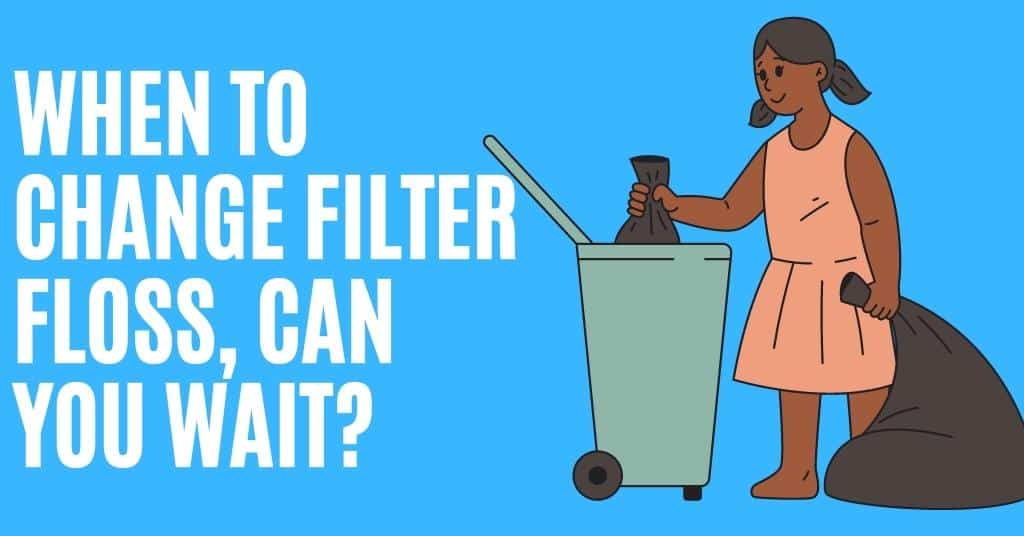Last Updated on February 18, 2022 by cmoarz
Knowing when to do filter maintenance is an important part of fish keeping. If you are using filter floss in your filter, You might be confused about how often you should change it based on all the varying opinions online. So let’s dive into it and give you a straight professional answer!

When to Change Filter Floss?
Table of Contents
As a general rule of thumb, You should change your filter floss about once a week. However, With a proper setup, you can extend its life considerably, up to a month at a time in some cases.
Can You Wait Longer Than a Week?
Yes of course! If you have a healthy tank with good water prams and your fish are not showing any signs of distress, then you can probably get away with changing the floss every two weeks or longer.
There are signs you should watch out for that may signal it’s time to change out the floss.

Water flow: If your water flow seems to be slowing down a bit then the filter floss is probably getting a buildup of gunk on it.
This is a sign it’s time to change out the filter floss.
You can extend the amount of time this happens by using layers of filter floss on top of a filter sponge. By having a filter sponge layer before the floss, You can stop the big debris that tends to clog the floss up quickly.

Lack of filtration: If the outflow from the filter appears to be dirty, or your water just isn’t clearing up, there’s a good chance the floss is blocked up and the dirty water is flowing around it and out through the filter.
You can extend the life of your floss by adding a sponge before the floss like mentioned above, then it will catch all that debris and you won’t see it coming out the other end, but if this happens you should change your floss.

Nitrite spikes: Filter floss that sits too long can cause nitrate spikes. This is because the build-up of organic material like fish poop and uneaten food will break down into ammonia, which is consumed by beneficial bacteria and turned into nitrates which in turn produce nitrites. Also known as the nitration cycle.
Ammonia and nitrates are deadly to fish, But nitrites are less harmful. However, a build-up in nitrites is bad and will eventually affect the fish.
Nitrites are also harmful to the bacteria that turn ammonia into nitrates, thus killing off their food source and causing a lack of beneficial bacteria, which can lead to more spikes in your water parameters!
This is why it’s important to change out the filter floss when there’s a spike in nitrate levels or even if there isn’t a spike, but nitrates are staying high.
So at the end of the day, there is a hard limit on how long you can go without changing your filter floss, even if it somehow remains relatively clean looking.
The safe bet is a once-a-week change, but every two weeks or longer is totally fine if you’re going by the signs above. If it looks dirty, change it out! However, If the fish are doing well and your nitrates aren’t too high then you can probably get away with less frequent changes.
The size of the aquarium tank and gallons of water also changes how often you should change your filter floss. The bigger the tank, the more gunk buildup there’ll be on the floss so it will need to be replaced more frequently, however, nitrites are less likely to be as high of an issue as with a smaller tank.
Remember, The cleaner the filter floss is, the healthier your fish are! So for optimum health check your filter floss often.
About
Owner of AquariumGravel.com and also owner of actual Aquarium Gravel believe it or not! ;). Setting up beautiful aquarium sceneries and habitats since I was very young. Enjoy!
- Web |
- More Posts(290)

